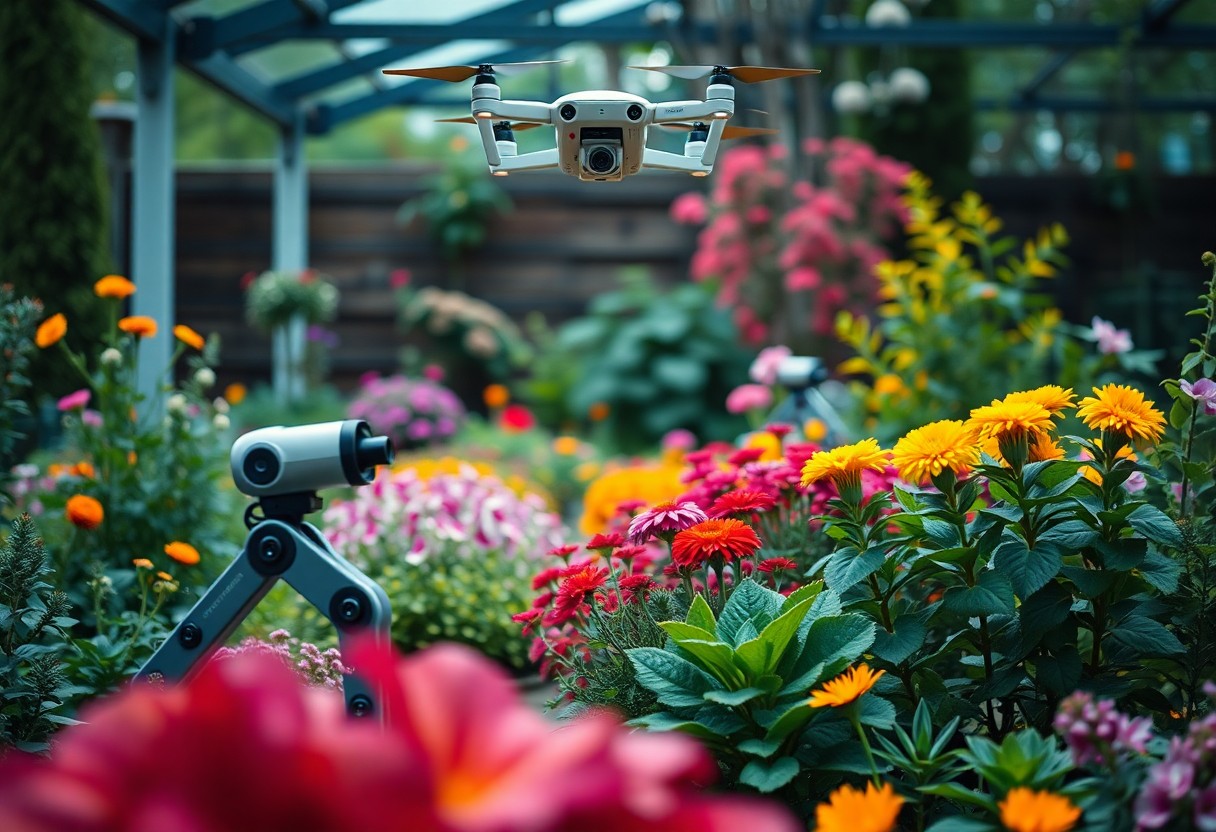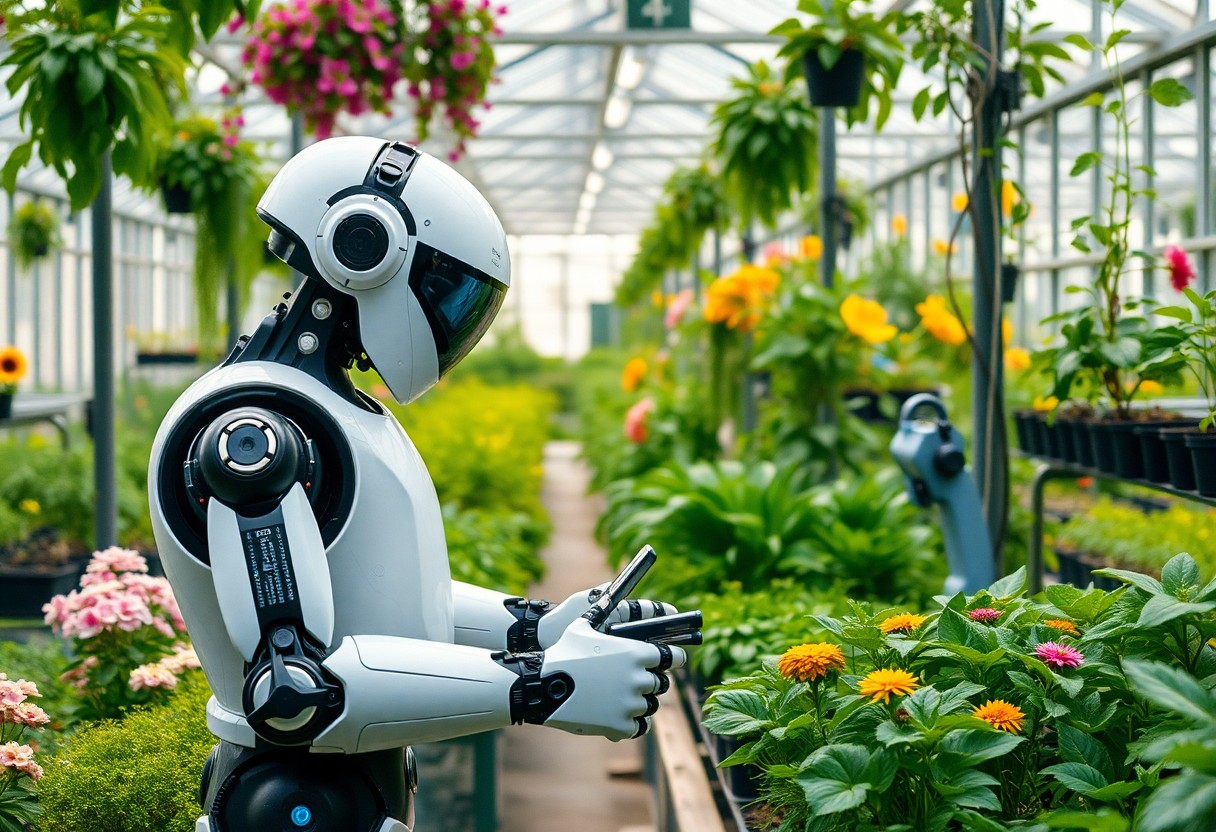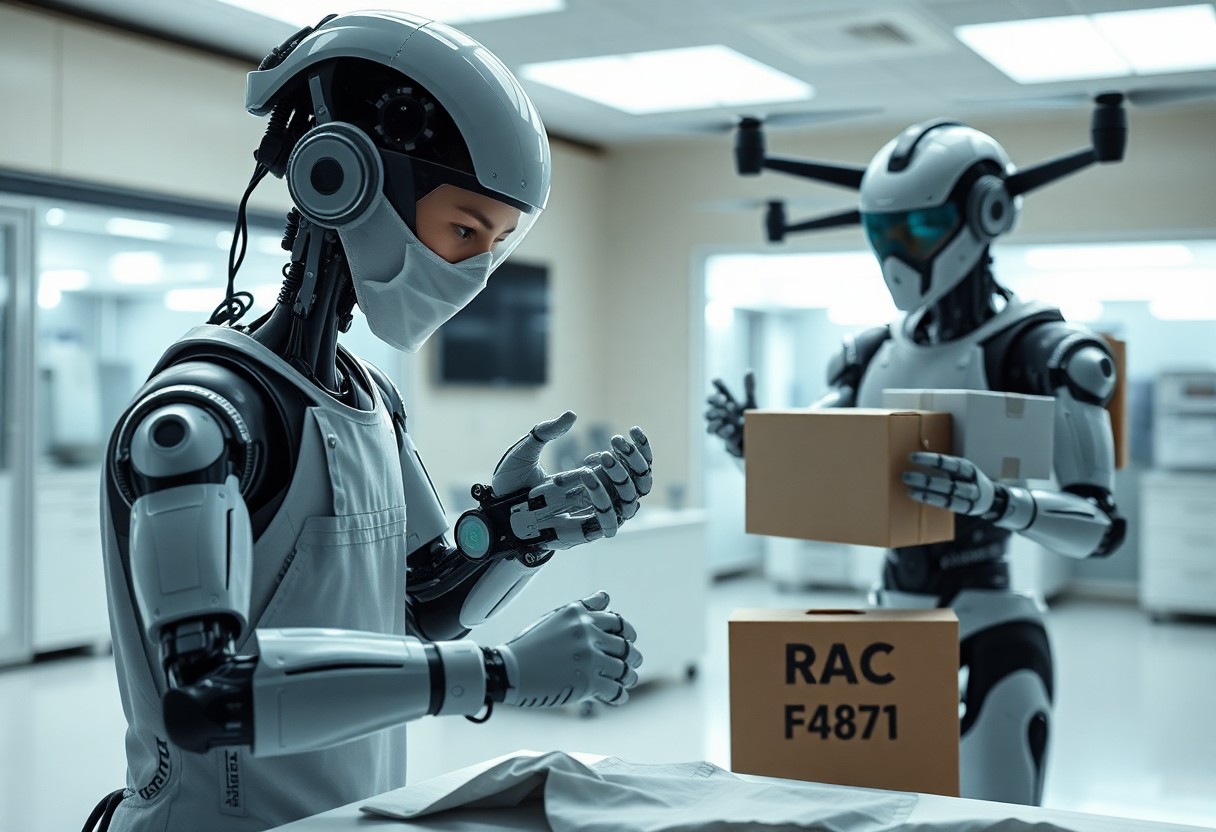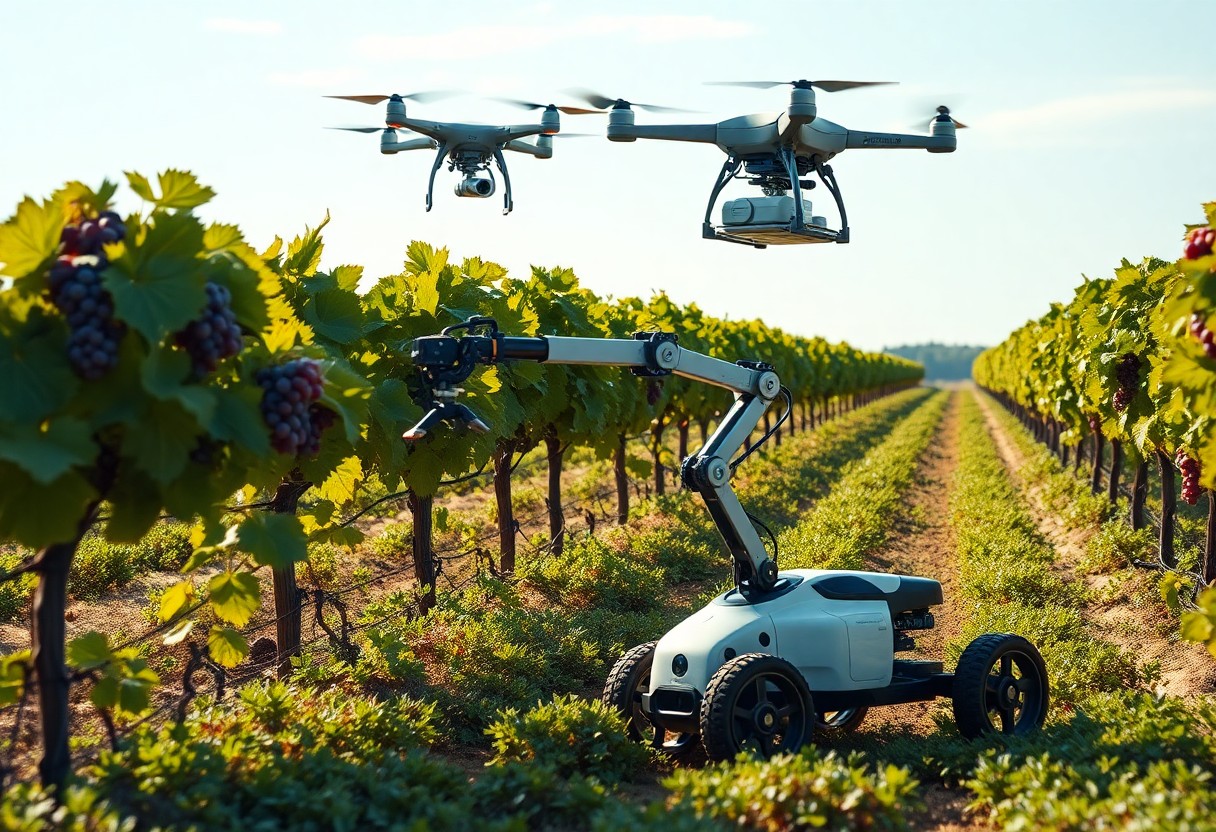Innovations in robotics are revolutionizing how you approach gardening and plant care, turning traditional green thumbs into efficient, tech-savvy green hands. With advancements like automated systems, precision agriculture, and AI-driven plant diagnostics, you can enhance your gardening experience, streamline tasks, and increase your yield. Embracing these groundbreaking technologies not only saves you time and effort but also opens up new possibilities for sustainable practices in your backyard or urban garden. Discover how these robotic innovations can transform your gardening journey into a more productive and enjoyable endeavor.
The Robotics Revolution: Redefining Traditional Gardening Practices
Innovations in robotics are reshaping how you approach gardening, allowing for increased efficiency and precision. No longer do you have to rely solely on manual labor to cultivate your garden; robots now facilitate various crucial tasks, from planting seeds to harvesting crops. By integrating advanced technology into traditional practices, you can achieve higher yields and healthier plants while minimizing labor stress and resource waste. Embracing these robotic tools ultimately empowers you to become a more effective and intelligent gardener.
Smart Planting Techniques: Autonomous Seeders and Planters
Autonomous seeders and planters take the guesswork out of your planting process. These robotic machines utilize GPS and pre-programmed algorithms to plant seeds at optimal depths and intervals, increasing your crop’s survivability and yield. Through smart planning, you can ensure efficient land use while minimizing overlaps and gaps—ultimately streamlining your gardening efforts.
Precision Agriculture: Drones and Sensor Technology Enhancing Crop Yield
Drones and precision sensor technology are revolutionizing the way you monitor and manage your crops. With the ability to analyze large areas quickly and accurately, these tools gather necessary data on soil conditions, moisture levels, and crop health. By utilizing this information, you make better-informed decisions that optimize irrigation and fertilization, leading to increased crop yields and reduced waste.
For instance, consider the use of UAVs (unmanned aerial vehicles) equipped with multispectral cameras that capture images reflecting different wavelengths of light. This enables you to assess plant health with remarkable precision, identifying areas requiring attention before visible symptoms arise. Additionally, integrating soil moisture sensors helps you adjust watering schedules effectively, conserving water while ensuring your crops remain healthy. By harnessing these advanced technologies, you can significantly enhance your gardening strategies, potentially boosting yields by up to 30% and fostering sustainable gardening practices that benefit both you and the environment.

Robots in Daily Garden Maintenance: Unleashing Efficiency
Daily garden maintenance is now a breeze thanks to innovative robotic solutions that enhance efficiency and productivity. From automated irrigation systems to intelligent weeding robots, these technologies allow you to devote more time to enjoying your garden rather than tending to it, making gardening a more accessible and enjoyable hobby.
Intelligent Watering Systems: Robots That Understand Moisture Levels
Imagine having a garden that waters itself! Intelligent watering systems equipped with moisture sensors can assess the hydration needs of your plants. These robots activate irrigation processes only when soil moisture dips below optimal levels, ensuring you conserve water while promoting healthier plant growth.
Automated Weeding Solutions: Reducing Labor and Chemicals
Automated weeding solutions are revolutionizing how you approach garden maintenance by targeting weeds precisely and efficiently. These advanced robots employ vision technology to identify and eliminate unwanted plants without harming your desired flora, alleviating the tedious labor of manual weeding and reducing the need for chemical herbicides.
Automated weeding robots employ sophisticated algorithms and machine learning to distinguish between crops and weeds. For instance, the Tertill garden weeder autonomously navigates your garden beds, swiftly removing weeds while allowing your vegetables and flowers to thrive. These machines not only save you countless hours of back-breaking work but also promote organic gardening methods by minimizing reliance on harmful chemicals. With models like the weeding robot from EcoRobotix reducing herbicide use by up to 80%, you can cultivate a healthier garden while embracing sustainable practices.
Data-Driven Decision Making: How AI is Boosting Gardening Success
With the advent of AI, data-driven decision-making has transformed gardening practices, empowering you to cultivate your garden more effectively. Leveraging advanced algorithms, AI analyzes vast amounts of data, allowing you to optimize growth conditions for each plant. Sensors monitor moisture levels, sunlight exposure, and temperature, providing valuable insights that enhance your gardening strategies. Discover how how sensors, robotics, and AI can boost gardeners’ efficiency and contribute to a flourishing garden.
Predictive Analytics: Foreseeing Plant Health and Growth Patterns
Utilizing predictive analytics, you can anticipate plant health and growth patterns with impressive accuracy. AI algorithms analyze historical data alongside real-time information, identifying trends that indicate when your plants may need care or adjustments. This proactive approach enables you to address potential issues before they manifest, ultimately fostering a thriving ecosystem in your garden.
Connecting Gardeners with Real-Time Insights through IoT
The Internet of Things (IoT) revolutionizes how you interact with your garden by providing real-time insights into its conditions. Smart sensors, equipped within your garden, relay crucial data regarding environmental factors directly to your devices. This seamless connectivity allows you to make informed decisions on watering, fertilization, and pest control, ensuring optimal growth for your plants.
As IoT technology continues to evolve, the integration of smart solutions into your gardening routine becomes increasingly attainable. Devices such as soil moisture sensors and climate monitoring systems offer you immediate feedback about your garden’s health and requirements. This access to real-time data means that you can adapt your gardening practices promptly, boosting productivity and improving plant resilience. By harnessing these insights, you cultivate not just plants but an informed approach to gardening that makes your green thumb smarter and more productive.
Accessible Gardening: How Robotics is Making Horticulture Inclusive
Advancements in robotics are breaking down barriers in horticulture, making gardening more accessible to everyone. Easy-to-use robotic systems and tools allow individuals with varying abilities to engage with nature without the physical strain typically associated with gardening. Innovations such as automated planters, smart sensors, and maintenance drones empower individuals to nurture plants, enhancing both mental well-being and community bonds through inclusivity in gardening.
Robotics Tailored for Elderly and Disabled Gardeners
Robots specifically designed for elderly and disabled gardeners reduce physical limitations while promoting independence. These assistive devices can help with tasks like weeding, planting, and watering, which may otherwise be daunting for those with mobility issues. For instance, robotic arms equipped with grippers can handle soil manipulation, enabling users to cultivate their gardens with minimal effort. This technology not only makes the gardening experience more enjoyable but also strengthens the participants’ connection to nature.
Community Engagement: Robotics That Empower Urban Gardening Initiatives
Urban gardening initiatives benefit greatly from robotics that enable community participation. Automated gardening systems, such as hydroponic units, allow neighborhoods to create green spaces in urban environments. These systems often include features like data tracking and remote monitoring, enabling community members to collaborate on the cultivation process—from planting to harvesting—while sharing their knowledge and experiences.
Urban gardening robots not only make the practice more feasible but also serve as educational tools that foster engagement among diverse populations. For example, CitySprout, a community-oriented robot, offers real-time updates and support for urban gardeners, allowing them to maximize their yield while cultivating community spirit. As local residents work together on these initiatives, they gain valuable skills in sustainability and resource management, helping to transform cityscapes into greener, more vibrant spaces.
The Future of Urban Gardening: Innovations on the Horizon
As urban landscapes evolve, gardening practices are set to undergo a significant transformation driven by innovation. Futuristic technologies like smart irrigation systems, AI-driven plant monitoring, and automated vertical farms will revolutionize how we think about gardening in confined spaces. These advancements streamline planting, maintenance, and harvesting processes, making it easier for you to cultivate greenery amid the concrete jungle. Urban gardening will not only thrive but also become more accessible to those with limited space or time.
Vertical Farming Robots: Transforming Urban Landscapes
Vertical farming robots are becoming integral to urban gardening, maximizing space efficiency and increasing yield. By employing robotics in multi-layered gardens, these innovative machines automate planting, watering, and harvesting, allowing you to enjoy fresh produce without needing extensive outdoor areas. They optimize plant growth through precisely controlled environments, ensuring optimal light, temperature, and nutrients, turning even the smallest apartment balcony into your personal farm.
Sustainable Practices: Robotics Leading to Eco-Friendly Gardens
Robotics play a pivotal role in advancing sustainable gardening practices. Automated systems can monitor soil moisture, nutrient levels, and plant health, ensuring you use resources efficiently. These technologies help reduce water consumption and minimize chemical runoff, leading to healthier gardens that benefit the environment.
Consider how drones equipped with sensors can assess your garden’s vitality, pinpointing issues like pest infestations before they escalate. Moreover, robots designed for sustainable harvesting can pick only ripe vegetables, ensuring productivity without waste. The integration of eco-friendly practices not only supports your gardening efforts but also aligns with a larger movement toward sustainability, helping to reduce carbon footprints and make green living more feasible in urban settings. The marriage of technology and nature is paving the way for resilient ecosystems within cities, allowing you to participate in a greener future effortlessly.
Summing up
Upon reflecting, you can see how novel innovations in robotics are reshaping the gardening landscape, enabling you to cultivate your green thumb with enhanced efficiency and precision. From automated planting and watering systems to drones that monitor plant health, these advancements equip you with tools that simplify labor-intensive tasks, optimize growth conditions, and reduce resource waste. As you embrace these technologies, you’ll find that maintaining a vibrant garden becomes more accessible and enjoyable, allowing your passion for gardening to thrive in unprecedented ways.







